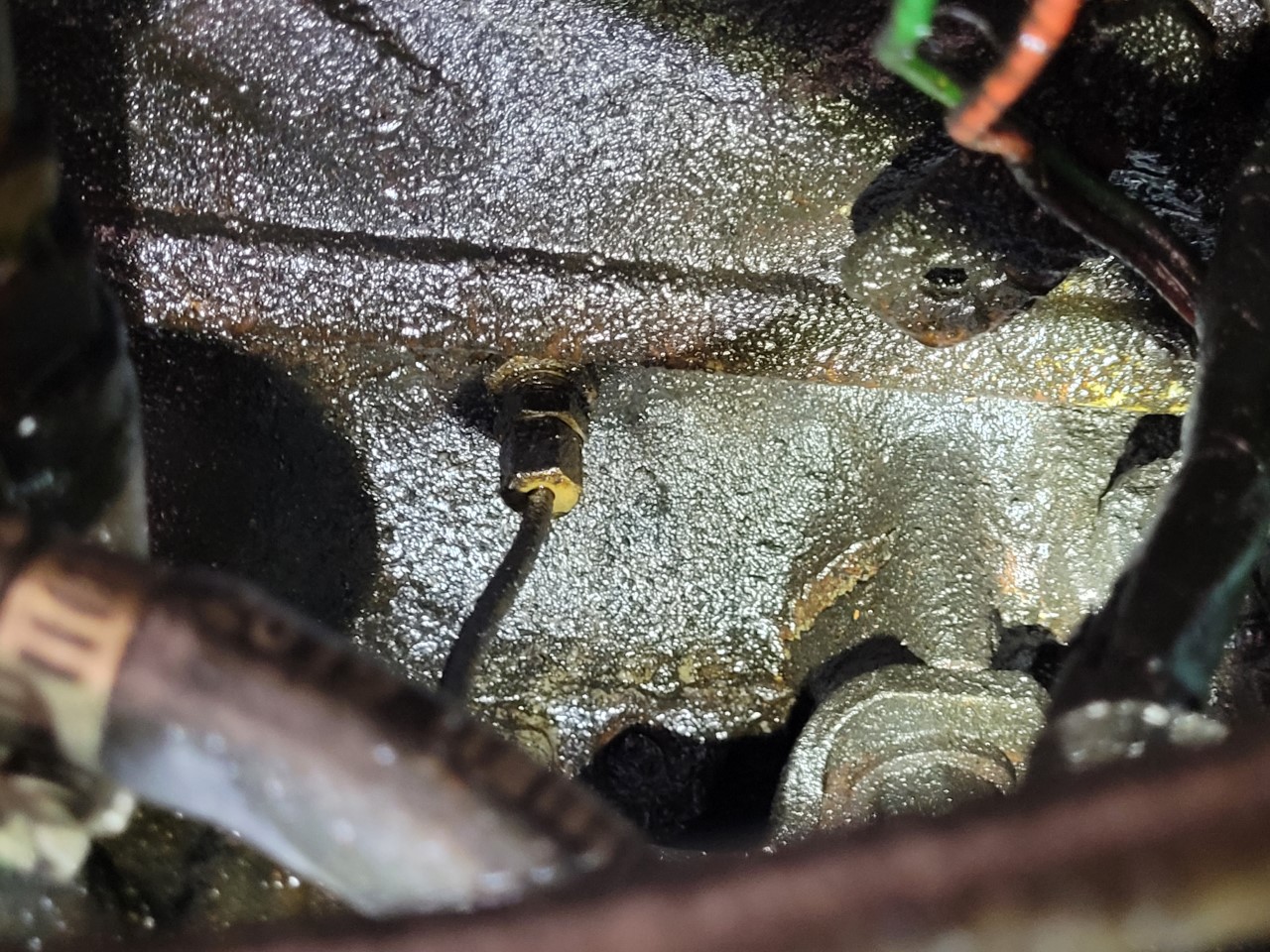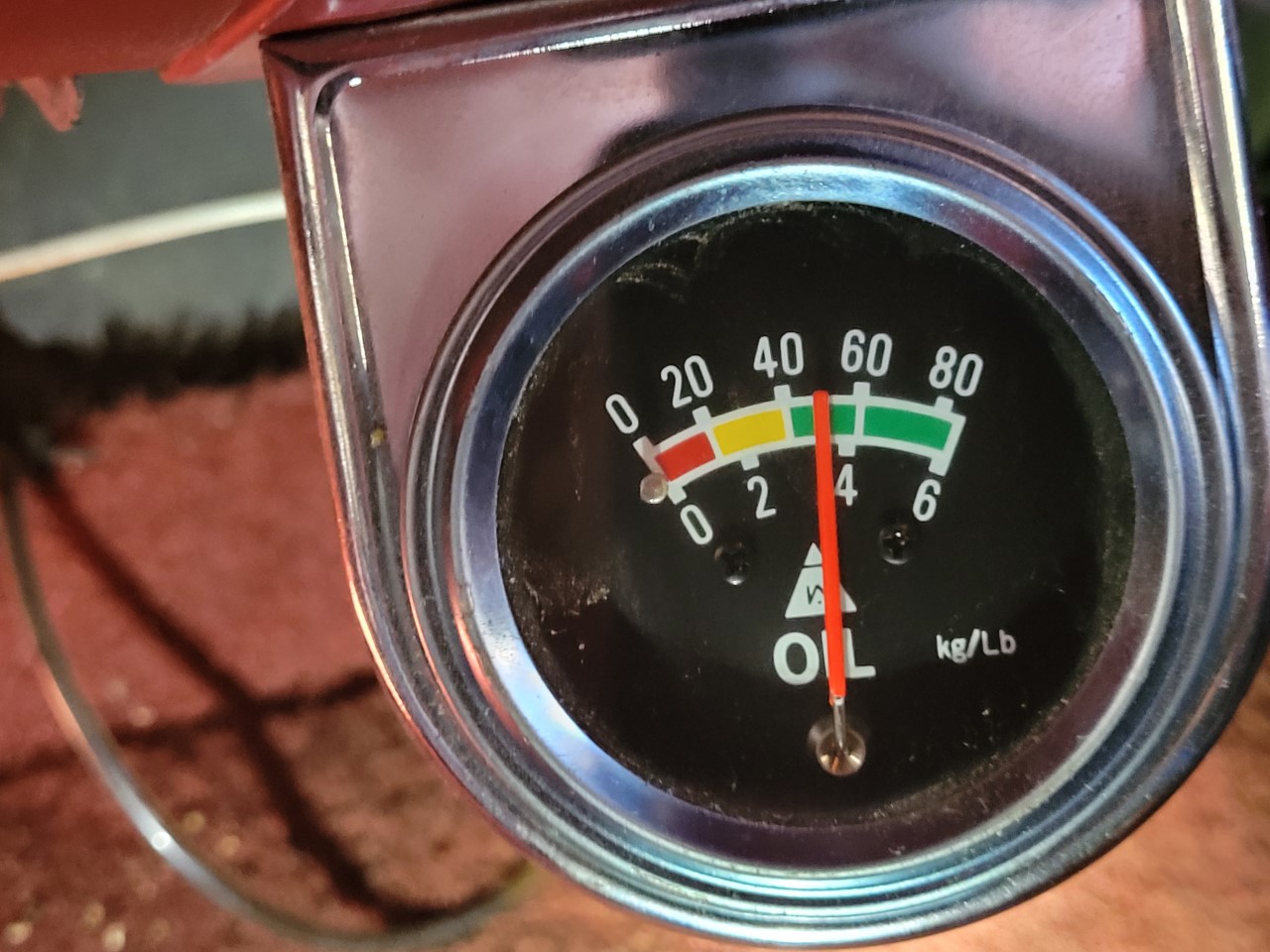Search Forum
Installing mechanical oil pressure gauge
|
Hi all, i’m sure that this has been covered somewhere but I don’t seem to be finding anything so I thought I would just ask if anyone can recommend a thread or a website or other resource that covers installing a mechanical oil pressure gauge. I have a 351MM and tired of playing a guessing game with my original ford oil pressure gauge.
I’ve seen recommendations to upgrade to copper lines versus plastic, but I’d like to get intel on where to install,how to connect, quality gauge brands, kits etc to assess if this is something I could do. I’d like to keep my old gauge active / in play versus decommission it in this process. Thanks!
Christopher in Portland Or. 1981 F250 Ranger XLT 4x4 trailer special 351M, and auto C6
|
Re: Installing mechanical oil pressure gauge
|
Not sure this is helpful, but my 351M has a plastic line (it came with the truck). The line connects to the back of the block.
It is on my low priority list to look at it because it weeps a little oil back there. Best access is from under the truck. The gauge is a sunpro I think. It works well enough. Tackling this along with the interior is on my spring/Summer project list. My oil pressure gauge is being used for the moment as my temp meter—because my temp meter failed somewhere—either the gauge itself, or the plastic/copper circuit board. Came up with this thanks to FuzzFace2. I rec keeping those gauges in case one fails you can have a option. Why not go for the entire cluster? oil, Temp, etc.? I know some on here swear by nothing less.
1980 Ford XLT F350
400 Engine (rebuilt to 406) Holley 2300 500 CFM manual Choke Carb Under Restore (1st time) |
Re: Installing mechanical oil pressure gauge
|
In reply to this post by delco1946
Hi Chris, I added a mechanical oil pressure gauge in both my '81, and '82 Flaresides.
My trucks have 6 cyl engines, but I would think that the install process would be similar with the V8. On my engines, I removed a small plug in the block, installed the brass fitting, run the plastic hose through the firewall, and connected it to the gauge. I then connected the wires for the gauge light into the wiring harness to allow the light to come on with the rest of the gauge lights. The factory oil pressure gauge remains operational and unaffected by the new gauge. My 6 cyl engines run aprox 40-45 psi most of the time.  
1- 1981 F100 Flareside,
1- 1982 F150 Flareside 1- 1985 M150 Flareside 4X4 |
Re: Installing mechanical oil pressure gauge
|
Administrator
|
Yes, the oil fitting on an M-block is at the top/back of the block. There should already be a sending unit there and if you want to use both then just add a tee.
On plastic vs copper, I've used both w/o problems. But I like copper better. Copper lines seem to seal better than plastic as the plastic doesn't hold the ferrule straight like copper does. And I've used Sunpro, but like AutoMeter, VDO, and Stewart Warner the best. Also, there are very different sweeps available. In my opinion the ones with a 270 degree sweep is best since you can easily eyeball the gauge and know where the needle is pointing.
Gary, AKA "Gary fellow": Profile
Dad's: '81 F150 Ranger XLT 4x4: Down for restomod: Full-roller "stroked 351M" w/Trick Flow heads & intake, EEC-V SEFI/E4OD/3.50 gears w/Kevlar clutches
|
Re: Installing mechanical oil pressure gauge
|
In reply to this post by AmericanSavage
I am reading your thread and cant help but wonder why no one has suggested that you toss that tiny little tubing away (copper OR plastic) and use a -04AN hose?
First, compression fittings are very unreliable. The Farrell crushing down on the tubing (nylon or plastic) poses a restriction in the tube. You will still get somewhat accurate overall pressure, but the response time of your gauge will be slow and you will see no variants in pressure due to operating conditions like variants in pressure during acceleration, deceleration and subtle pressure events during steady state operation. The tiny hoses, Farrells and the restriction they pose will stifle the important pressure increases and decreases you most need to be aware of! On a warm engine, you can actually see when the bypass valve kicks on if you look closely. Second, as you said, they always leak eventually! The nylon tubing will get old and brittle and leak and eventually, crack from vibration alone eventually! Considering that these tubes bring hot engine oil into the cabin of your vehicle, I would absolutely not use nylon! Copper is better, but still, over time, will fail! I have seen this happen more times than I can count where engine oil ends up getting sprayed all over the back of the dashboard and floor from a failed gauge hose. Having installed hundreds of oil pressure gauges has taught me that a -04 AN braided hose is MINIMUM for safe accurate pressure, particularly for a highly viscus fluid like engine oil. Additionally, a hose of this size and style will resist kinking, and not fail over time. The larger inside diameter of -04 AN will provide you with accurate gauge deflection as you will see real-time pressure fluctuations over the entire operating range of your engine. Most gauges go from a 1/8 npt nipple to a 1/16 hole on the back of the gauge to make the gauge movement smoother, but having a tubing size that is that small only stifles the normal operation of the gauge. Sure, it will cost you a few more dollars and a few more fittings will need to be installed, but i GUARINTEE that if you use nylon or copper tubing, eventually, your going to be revisiting your gauge line for one thing or another, in spite of the fact that there is always going to be someone that is going to say that they have had that garbage on their car for 20 years and have never had a problem! That is the exception! Even if it does not fail, it is not accurate and does not show you any meaningful pressure fluctuations that are important to know! Just a couple months ago, I have a customer who saw her oil pressure fail to drop a few PSI when placing the engine in gear like it usually does. A quick look revealed that her oil pressure bypass valve on her oil pump was not functioning properly and a quick replacement of the pump resolved the problem. You would have NEVER noticed that subtle drop of pressure with a tiny gauge hose! Just a thought! |
|
In reply to this post by delco1946
I just did this same thing. I picked up a camper special in the fall with 351m/c6. i got it running well enough for a run around the lot at work, up to temp and working out some old gas then road test. by the time i got back the oil pressure seemed rather low so I installed (loosely) a mechanical gauge with the plastic line and retested. this showed me very low oil pressure, so out it came and got new bearings, timing chain and water pump. at this point it was put back new as necessary. voila! 75 psi cold, 60 hot, and 25 psi idling at the off ramp, after 15 miles at 70. and she is running great. next is to put it back to the original after I'm comfortable. I might install a tee and use both, but I like things uncluttered.
|
|
Thanks for the tips all! Hopefully if it isn't downpouring this weekend i'll investigate under the hood.
Christopher in Portland Or. 1981 F250 Ranger XLT 4x4 trailer special 351M, and auto C6
|
|
I may be the only one here that feels this way, but I don't like the idea of bringing hot oil inside the cab for a live gauge. When adding an oil pressure gauge, I only use electric gauges.
Ford Parts Monkey since 1985
1981 F100 Flareside - Black, 302-4V Roller/AOD 1986 F150 Flareside - Medium Fire Red 302/AOD 1989 F150 Standard Cab 4x4 - Dk Shadow Blue 302/AOD 1993 F350 4x4 Crew Cab - 7.3 IDI/ZF-5 I think it's a sickness... |
Re: Installing mechanical oil pressure gauge
|
AMEN!
|
Bullnose Enthusiasts Forum
|
1 view|%1 views
| Edit this page |

